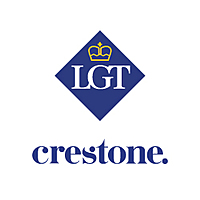What are Australia's near-term growth prospects?
The most recent Crestone Investment Forum was held on 26 February, yet much has transpired globally and in Australia since that time. Most pressingly, the coronavirus (a topic discussed at the opening of our forum), has spread rapidly outside China, with more new cases now occurring worldwide than at the peak of China’s outbreak. Globally, human activity has been sharply curtailed following outbreaks in South Korea, Italy and Iran, while fears are growing that US authorities are not well enough prepared.
On 11 March, the World Health Organisation declared the coronavirus a ‘pandemic’. In tandem with evidence of a rising near-term impact on global growth (even as China returns to work), this has led to a sharp move weaker in global equity prices and market interest rates have also fallen sharply. Policy makers globally have been moving quickly over recent weeks, with interest rates being cut in many countries, including the US, the UK and Australia. Fiscal policy has moved more stimulatory in Europe, the US and many parts of the emerging markets. Adding to concern, the recent breakdown in negotiations between Russia and OPEC has delivered a 30% fall in oil prices, raising concern of rising stress in global credit markets.
Since the Crestone Investment Forum took place at the end of February, the Reserve Bank of Australia (RBA) cut its cash rate by 25 basis points to 0.5%. Prior to this decision, we asked the panel whether it is likely that the RBA will cut this year, and what this means for Australia’s near- term growth prospects.
How many times will the Reserve Bank of Australia cut rates?
Steve Goldman, Managing Director and Portfolio Manager at Kapstream Capital, expected the RBA to cut at least twice, admitting he feels Australia is in a better fiscal position and better equipped to deal with any near-term issues than the US, for example. With no growth or inflation coming through, it is likely to be a low rate environment for a long time.
Stephen Halmarick, Managing Director, Head of Global Markets Research at CBA, emphasised that CBA had a two-rate cut expectation well before the bushfires and coronavirus, and that Governor Lowe is determined to be a cheerleader for the economy. The housing market is very strong and motor vehicle sales are picking up. Everything else is flat or down, including tourism and education. The RBA needs to respond to that, and he feels that the RBA would also be pleased if the currency was below USD 0.66.
What does this mean for markets?
Rob Osborn, Portfolio Manager at Lazard Asset Management, explained that the Australian market has been about price/earnings expansion, and it “has never been this extreme across the broader Australian market.” He said the key issue was where the growth is coming from, outlining that things are likely to get worse before they get better.
Alex Duffy, Portfolio Manager at Fidelity International, felt the long-term argument for emerging markets versus developed is still compelling, and that there are good opportunities out there. With margins and valuations where they are, this makes it challenging for developed markets.
Osborn added that there is no growth at the top line, with all the growth coming from financial outcomes that governments are providing. Giuliano felt there are businesses, such as Microsoft, and themes, such as the cloud, that will continue to grow and make money. He echoed Duffy’s comments that opportunities exist, but they are not easy to find.
How should Asset Allocators approach traditional assets now?
Scott Haslem, Chief Investment Officer at Crestone Wealth Management, broached the subject of credit from a domestic and global perspective, noting the high debt levels and potential cash flow problems.
Amy Xie Patrick, Portfolio Manager at Pendal Group, explained that there are risks to credit spreads globally, given we are close to GFC lows. “It’s an asset class where you are paid for five or six years out of seven. So, for one or two years in that cycle you are likely to wear some pain.” She felt there are more risks to high yield in the US, with technological changes making certain models redundant. Given this, those models that are expected to be disruptors have been levering up. From this perspective, Xie Patrick expects relatively better performance in Australian credit versus global, as there is a much more robust structure domestically.
Goldman added that high quality, short-dated Australian investment grade credit is a particularly defensive part of the market. Household names are likely to act as a buffer in a credit sell-off but will not provide investors with the yields they want. He expects to see a high yield sell-off in the US at some point.
Learn what Crestone can do for your portfolio
With access to an unrivalled network of strategic partners and specialist investment managers, Crestone Wealth Management offer one of the most comprehensive and global product and service offerings in Australian wealth management. Click 'contact' below to find out more.
3 topics
1 contributor mentioned

